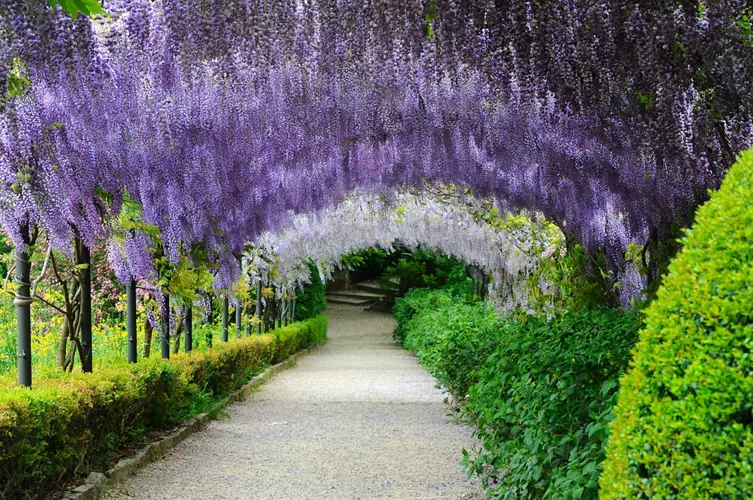This content was automatically translated. View the original text.

Overview
Bardini Garden: where nature is multicultural
The Bardini Garden in Florence are the perfect place for breathtaking views. Every time you visit its four hectares of parkland, the priceless panoramas will sweep you off your feet as though it were your first time.
This natural jewel is perched on Montecuccoli hill, surrounded by medieval walls, which was originally a system of walled vegetable gardens near Palazzo Mozzi.
An Italian style with an Anglo-Chinese flavour and a rural culture
You will notice a blend of three different styles and cultures: the Italian garden, with its unmissable Baroque staircase and six fountains nearby decorated with mosaics, the Anglo-Chinese forest, full of exotic nature, and finally the agricultural park, with a new orchard including pear, plum, peach and cherry trees, and a fascinating wisteria arbour.
The history of Bardini Garden
The 19th century saw the extension of the Baroque garden, with the purchase of the Anglo-Chinese garden of Villa Manadora, created by Luigi Le Blanc at the beginning of the century. Carolath Benten Princes later bought the property and embellished it with Victorian details.
In 1913, antiquarian Stefano Bardini bought the complex and built a pathway up to the Villa, destroying traces of the original medieval gardens and connecting the two buildings on the Costa San Giorgio.
A flurry of flowers
The perfect spot for anyone who loves nature walks surrounded by flowers, here you can admire more than 60 varieties of hydrangeas, tunnels of wisteria, roses and irises, and even a natural theatre, carved out of the vegetation in a hollow in the ground.
In the English woodland, the star of the show is the azalea field. It is also home to the Dragon Fountain, the source of the stream that runs along one side and through the garden, embellished with statues and flowering plants.
The garden, which today has become an exhibition centre, an events venue, and more generally a site rich in history, art and culture, also has two grottoes: one resembling a natural grotto, in the upper part, near the Kaffeehaus, and another that is more ornate, in the valley, with an eclectic appearance, recognisable by the brick arch that forms its entrance.
When you leave the villa, you will find yourself on the Costa San Giorgio: the Boboli Gardens, just a few minutes away, are well worth a visit.